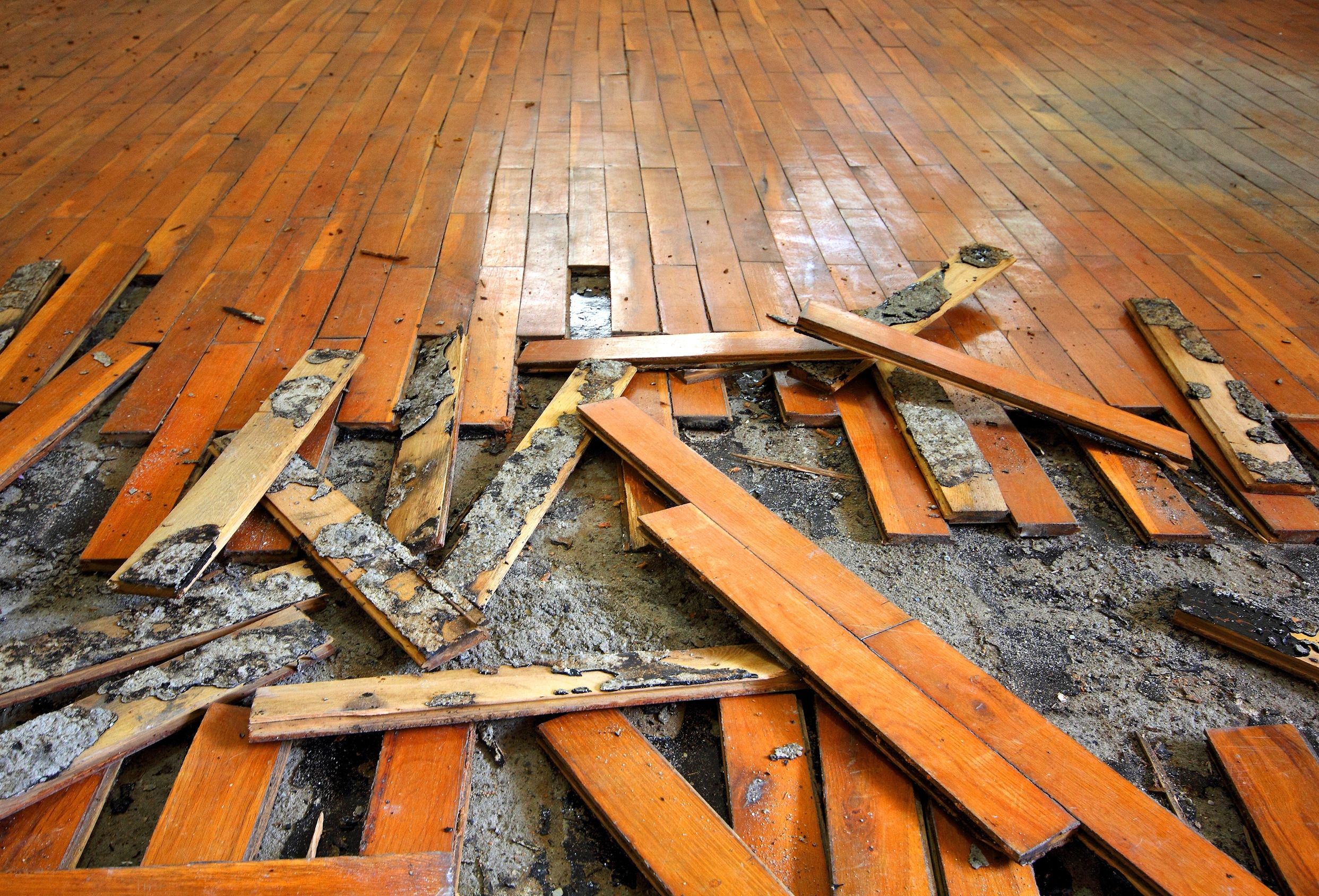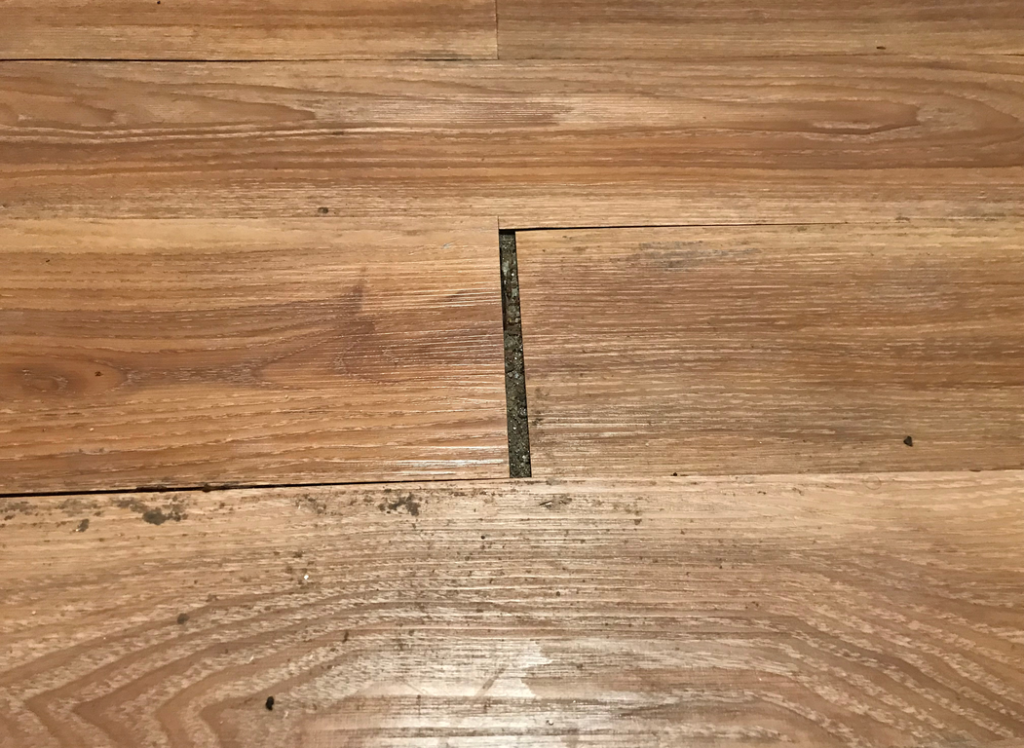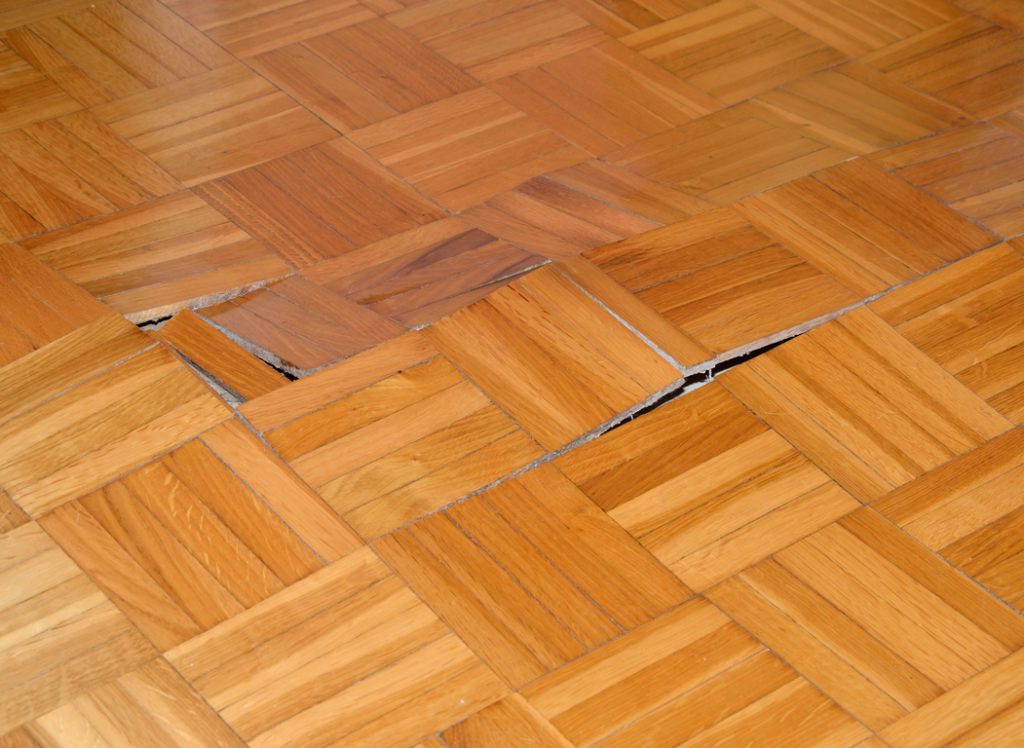
No matter what type of flooring you have in your house or flat, a leak under the floor can present a serious nuisance. You should be especially careful to prevent irreversible damage when handling a leak under laminate flooring or any type of wooden floor.
This article will propose some practical course of action for when you have a leak under the floor. Whether it is a water leak under concrete floor, or a leaking radiator pipe under floor, we will look at all the possible causes and solutions here.
We will use a step-by-step approach to show you how to remove the boards and install them again in the case of wooden floors. Moreover, we will also talk about how to find a leak under floor. So, without further ado, let’s jump right in.
How to find a leak under the floor (wood flooring)
First, let’s establish that a central heating pipe leaking under floor can happen any time, even in 2022. Moreover, it can affect all types of wooden floors. In fact, in some severe cases, water can even get through to the subfloors.
A wooden floor that has water damage is pretty obvious. Generally, you will notice a fair amount of warping, buckling and blotching. However, there are slight nuances here.
So, for hardwood floor, you might first notice a few dark spots. These might signal the presence of mildew or mold. Cupping or bulging already indicate serious damage.
In the case of a leak under laminate flooring, you will notice a general swelling at the edges. When the planks are no longer flat, it means severe damage. However, you should watch out for a certain discolouring first. This is the first sign of mold or mildew.
How to fix a leak under a wooden floor
Once faced with water damage, you should immediately try to determine the location of the leak source. Take out the boards placed immediately around it to reduce the damage. Then, if you’ve managed to isolate the leak, turn off the water and you will have some time to act.

How to dry the wooden floor after a leak?
It’s necessary to remove any remaining moisture from your wooden floors. It could cause permanent damage if you don’t do so..
First, remove any floor coverings you might have. They can keep the water in for longer than you’d expect. Use a wet vacuum to suck up as much water as you can. Dry out the visible water with towels or mops.
Secondly, scrub the wooden floor to remove any mud or silt that might have got caught in the corners. A non-abrasive stiff brush and some non-sudsing detergent would do the job.
Desiccants could also help here. They are materials that absorb moisture, and you can spread them in closed areas with poor air circulation.
Thirdly, you could remove a few wood boards to let the others expand as they dry out. This way, you avoid the risk of buckling or cracking.

If the water damage is severe, you might be forced to let the floor dry slowly for a few days or weeks. You could use a few large fans for better air circulation. Open the windows (except if it’s raining) and let air circulate through your interiors.
However, if you suspect the water might have seeped into the wood, you will need dehumidifiers to remove the moisture in the closed areas. In the case of dehumidifiers, you should close the windows and doors to let them do their job.
You might also be interested in how long wood flooring lasts.
Measure the moisture levels in the wood floors
To make sure your wood floors are completely dry and that the leak under the floor did not create permanent damage, you should use a moisture meter.
The normal moisture levels should be below 5%. You can buy a moisture meter at your hardware store.
How to remove the boards to gain access to the leak
In case you need access to repair the leak, you will have to remove the boards one by one. Take out all the wooden boards around the damaged area one by one. You can mark out a rectangle along the area. Take a circular saw, cut around this rectangle and then pull the boards out. Remove as many boards as you need to gain access to the leak.
How to replace the missing boards
If you managed to repair the leak, now you need to replace the missing boards. It would be perfect if you had some extra boards left somewhere in your basement or attic for such emergencies.
However, you could also take one of the boards you’ve just removed and go to a trusted local flooring supplier who might be able to offer you something similar in terms of colours.
In the case of a tongue and groove board, remove the tongue and then put the board back into place. When fixing the new board, take special care not to damage the plumbing with screws or nails. If the board you’re replacing is plane-edged, you will have to cut the board to size and then screw it into place.
As your new boards are right in place, they will probably require finishing to match the entire flooring. Even though it may initially differ from the remaining boards, you’ll be astonished at how well they blend in over time.
You might also be interested to read more about how to repair an oiled wooden floor.
How to deal with a leak under the floor (concrete)
No one likes a leak under bathroom floor. A shower leaking under floor is even worse. So, how can you detect a leak under the floor when you have concrete or tiles?

Well, the first obvious sign is puddles. However, when you see a big puddle of water on your bathroom floor, something is terribly amiss. It would be better to detect some earlier signs.
Mold is one such sign. It thrives in humid environments. So, mold can represent one of the earliest signs of a leak under concrete floor.
Loose or broken tiles can also signal water damage. So, when you see all these signs, it’s time to investigate.
Find the source of the leak under concrete floor
Well, the common culprits in this scenario are: toilet, sink, bathtub or shower, drain, ceiling pipes.
Turn off all the water sources you suspect to be the problem. Check the water meter to see if the numbers change in the next two or three hours. If the levels change, there’s a leak somewhere, most likely underneath the floor.
If the bathroom is on a second story, go downstairs and check the room underneath. Look for any signs of a leak – water stains or drops of water. If you can’t see anything, you’ll have to take the tiles off. That could be costly.
Repair the leak
A toilet leaking under floor or any other bathroom water problem can be tricky. If you have a broken pipe, you need to contact a professional for help. The water could also be coming from outside the home.
You might have a poorly sealed foundation or notice a crack in the home’s exterior. All of these can turn into nightmares. So, you’d better call in a professional.
How to Avoid Future Problems
When laying a new wooden floor, especially in the bathroom or kitchen, always remember to leave access points on your floor where you know there is a lot of plumbing.
Consider installing an isolation tap above floor level to buy you some time in case of water leaks.
Last but not least, regularly check all your appliances and plumbing. It will probably not prevent random leaks in 100% of cases, but it will definitely mitigate the risk or the problems.
If you need more help and advice, please feel free to call our flooring experts or visit our flooring showroom in North London.
| Mon-Fri | 8:00AM – 5:00PM |
| Saturday | 10:00AM – 4:00PM |
| Sunday | 11:00AM – 3:00PM |





.svg)
.svg)